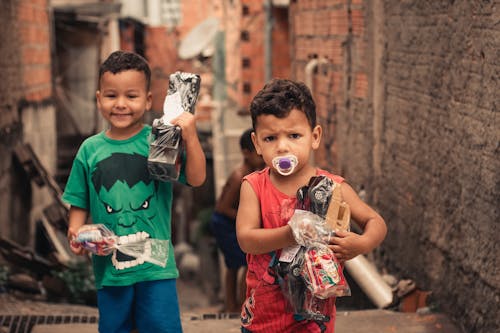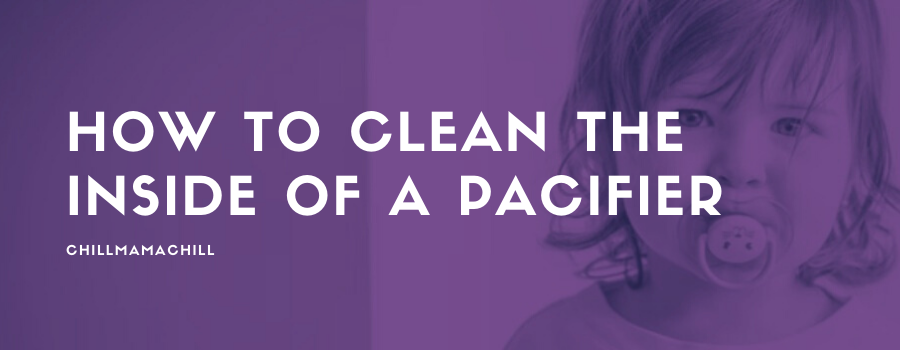Pacifiers help soothe your baby in times of stress and anxiety. The health of your child is of top priority. As such, their binky must be kept spotless and germ-free at all times. Ensuring there’s no chance of mold or bacterial growth, it’s essential you know how to clean the inside of a pacifier.
When cleaning your baby’s pacifier, you’ll notice the nipple contains holes that assist with sucking motions. Your child’s pacifier may also be a three-piece with joints where dirt or saliva gets stuck. Hold the pacifier under warm soapy water and let its insides become filled before squeezing, wringing, or shaking the binky.
Depending on whether your baby’s pacifier nipple is latex or silicone, you’ll be able to sterilize it using heat. Microwavable or dishwasher-safe binkies are easier to keep clean on their insides. But you can also hand wash a dummy with warm water and soap. Before using sterilizing additives, or taking apart the binky, read further to see how you can clean the inside.
How Do I Keep My Baby’s Pacifier from Becoming Dirty Inside?
You can’t stay without your child’s favorite binky. It’ll help when your baby is restless and crying in between feedings. Some pacifiers are made from one piece of silicone vs. latex, while others feature a nipple, shield, and ring of different materials. Nipples often have holes for balancing suction pressure; and you may see water, moisture, or dark spots forming on the inside.

According to the American Academy of Pediatrics, pacifiers are safe to use on your baby from newborn age. Not only does a binky calm, soothe and put your child to sleep, but it’s also said to reducing the risk of SIDS or sudden infant death syndrome, also called cot death. While a handy accessory, pacis can be a hygiene nightmare especially when their insides get dirty.
A clean pacifier guarantees your baby’s health, protecting them from germs the binky comes into contact with. Besides regular cleaning with hot water and baby-friendly dish soap, you must sterilize your child’s dummy. That’s best done with an electric sterilizer, a microwave oven, or a dishwasher, using boiling water to keep it free from microbial activity.
Remember that binkies have an expiration date, which is after two months of continuous use. If, however how much you clean your baby’s pacifier, it’s still gross, better throw it out. Replacing a dummy will also be pertinent to upsizing when your child passes the recommended developmental milestones. That includes reaching six months, and one year, decreasing the binky’s use after two and a half years.
What’s the Best Way to Clean a Pacifier on the Move?
The best way to clean your baby’s pacifier is using warm water and soap. You shouldn’t get the impression that wiping the binky, knocking off dirt, or licking with your mouth will improve its hygienic conditions. Microbes your child gets exposed to during infancy will affect the development of their immune system.
Babies have lower antibodies until the time they’re about ten months old. Allergies, eczema, or asthma are common maladies attaching to allergenic tots. These can later prove a challenge for your child to get over. In a situation where you’ve no access to heat and soap, use warm water by itself.
Since not all coliform will affect your baby negatively, you may use breast milk to clean a paci when you’re on the move. Make sure to deep clean or sterilize the binky as soon as you get home. Today, many models of pacifiers come with microwavable containers.
It’s intended for sanitization and sterile storage. If you use a dishwasher, place the binky in a mesh laundry bag or pop it into the cutlery drawer.
Removing Dirt, Water or Moisture Trapped Inside a Pacifier
You can ensure stellar sucking hygiene by keeping your baby’s pacifier clean. If your child is less than three or six months, you must protect them from microbial hazards. That’s because your tot’s immune system hasn’t been put through the paces and is susceptible to fungi, aerobic and anaerobic bacteria.
Frequent paci cleaning is desirable for a baby born premature or one that’s less than three months old. Alongside normal cleaning, you’ll need to scald the binky or put it through a sterilizing machine at least once daily. If the nipple retains water, squeeze it or hold the dummy by the ring to fling off the moisture through the suction pressure hole.
I recommend buying more than a couple of each size of the binky, often sold in dual or value packs. That way, you can quickly switch when your child’s dummy hits the floor or comes in contact with less than hygienic surfaces. When your tot has grown attached to a particular paci, buy a model that looks exactly similar and switch when they’re not looking.
You’ll also inspect the binky after each cleaning to see whether there are signs of material damage. That’s especially essential if your baby uses a latex nipple. Natural rubber breaks down quicker and is affected more by heat than silicone nipples. Whether it’s time to change pacifier size or not, throw out dummies that prove difficult to clean. Let your child use a paci for less than four or six weeks at most.
How to Go About Cleaning the Inside of a Pacifier
You may not have sterilizing equipment. It could also be that you can’t use heating machines like a microwave due to your baby’s pacifier latex nipple. Avoid boiling or using antibacterial cleaners and sanitizing agents as they’ll cause the binky’s components to fail by cracking, tearing, or cutting.
To prevent steam moisture from collecting inside, soak the binky in equal parts of water and vinegar, leaving it submerged for about five minutes. If your child’s dummy’s nipple has a suction valve, squeeze out excess water from the nipple and leave it to dry.
You can use a clean diaper, straight from its packaging to wrap a pacifier with trapped vapor in the nipple. Baby diapers have a super absorbent layer on the inside, and they’re sterile when clean to suck out moisture from the binky.
Conclusion
It’s a hypothesis that kids who live in over-sterilized conditions don’t create a strong enough immunity to fight pathogens. However, even when hand washing or using moist steam sterilizers, it’s challenging to clean a pacifier’s inside.
While you can trust that the heat will kill mold or bacteria, leaving water or vapor trapped within the binky exacerbates the problem. For silicone nipples when your child is over three months old, you can place them in a sieve and pour boiling water through.

I’m Cathrine and I’m a 39-year-old mother of 3 from Utica, New York. And I’m extremely happy you’ve come to visit my hide-out on the web. Here I post about everything related to family-life and usually it will involve babies and lessons I’ve learned over the years from experts, friends, and my own mistakes. So hopefully you will find what i write fun and informational!

